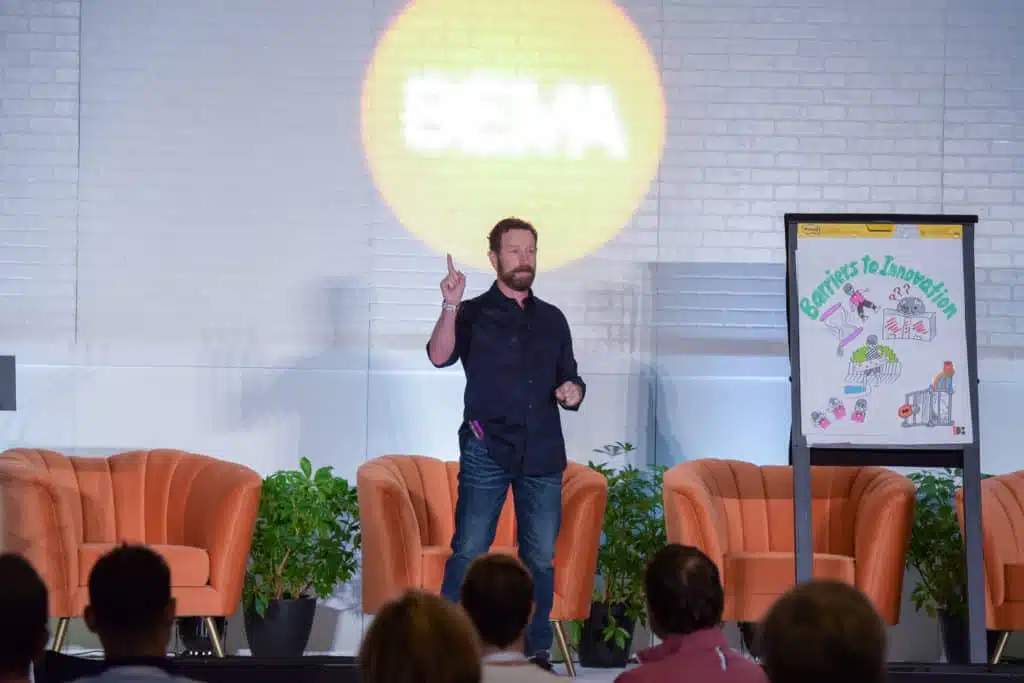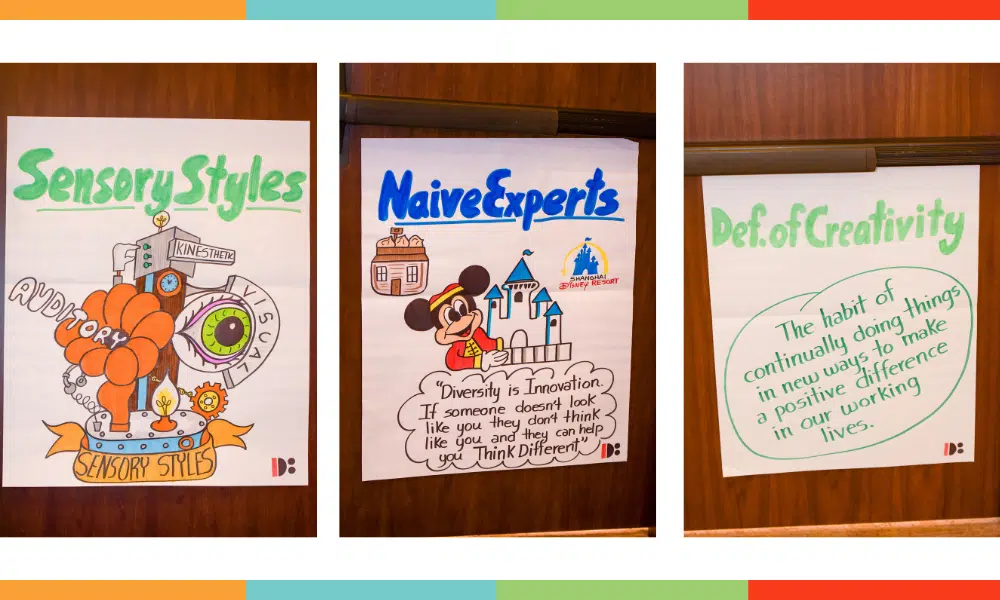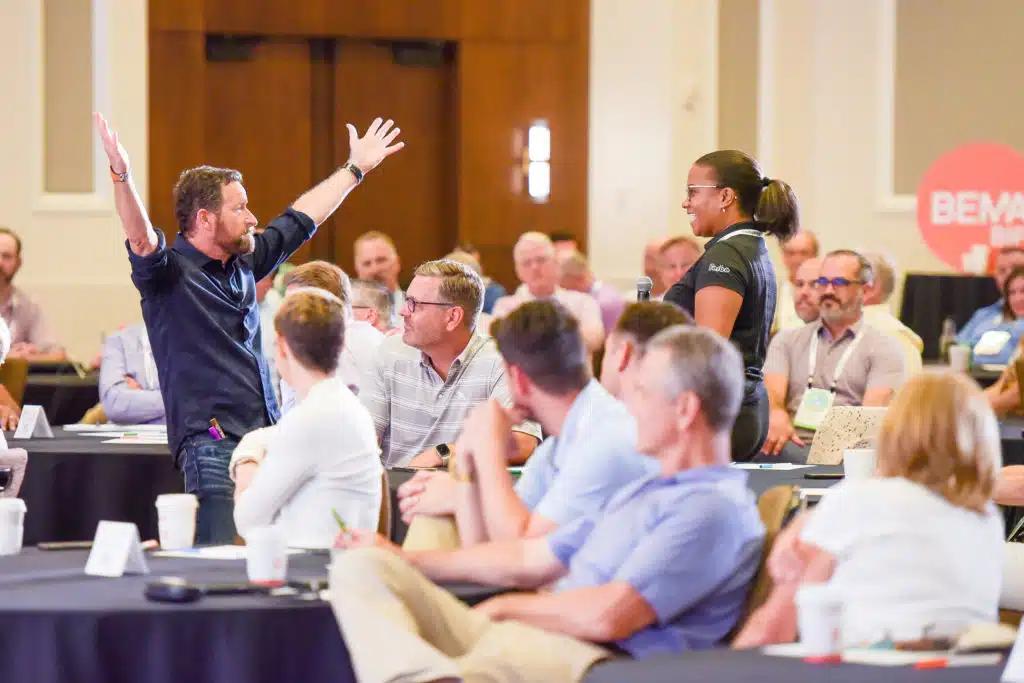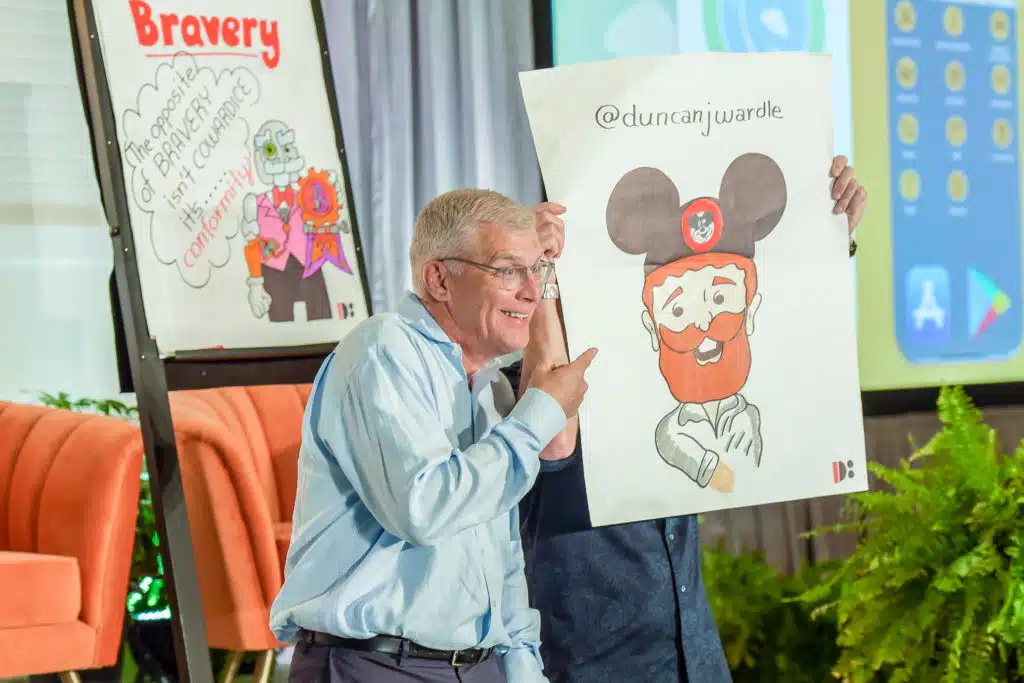07 Jul BEMA Convention 2021: Keynote Speaker Address

Keynote – Duncan Wardle, Design Thinking
In the transition from child to adult, there are many boxes that we draw ourselves into and allow ourselves to be contained within. Keynote speaker Duncan Wardle, former head of innovations leadership at Disney, offered a different perspective on how to welcome creativity into the workplace using design thinking principles.

From crafting impromptu designs of parachutes for elephants and becoming sex therapists for honeybees, Duncan shared how to generate and access creative ideas that can turn ordinary companies into industry leaders. Applying such creative methods can empower entire organizations to redefine how they think about problems and solutions to evoke creativity that can remove or reimagine barriers.

But what about those times and places when creativity isn’t welcomed? A survey of the audience found barriers to creativity include red tape, lack of money and simply not having enough time to think. As the rut of non-creativity grows deeper, it becomes harder to generate a mindset and an environment open to new ideas. Getting out of the rut can begin with asking “what if,” a question that ushers in the courage to offer productive questions and permission to act as if the rules never really applied.

Children are the best model of creativity – good at play and asking the word why. Adults, on the other hand, excel at strategy, planning and critical thinking. Simply asking what someone thinks encourages expansive thinking. Asking questions with the right words can be the first step to turning a busy, beta brain that doesn’t have time to think into an alpha brain that’s open to big ideas. Simply switching the conversation from “no, because” to “yes, and” can encourage expansive thinking and transform “my idea” into “our idea” – generating concepts that bigger and better. Playfulness, laughter and movement also encourage expansiveness, opening the subconscious to thinking differently.

Using these techniques, you can begin to create small changes with the ability to shift individual and group thinking. Host a staff meeting differently (welcome a naïve expert or do a walking meeting), tackle challenges from an audacious perspective (asking “yes, and”) and welcome in new stimulus with audacious brainstorming (“what if”). These small actions keep the gut and the brain primed for discoveries of what’s new. Use these changes to spark conversation and include others in the process to uncover that which is audacious, bold and inventive.





No Comments